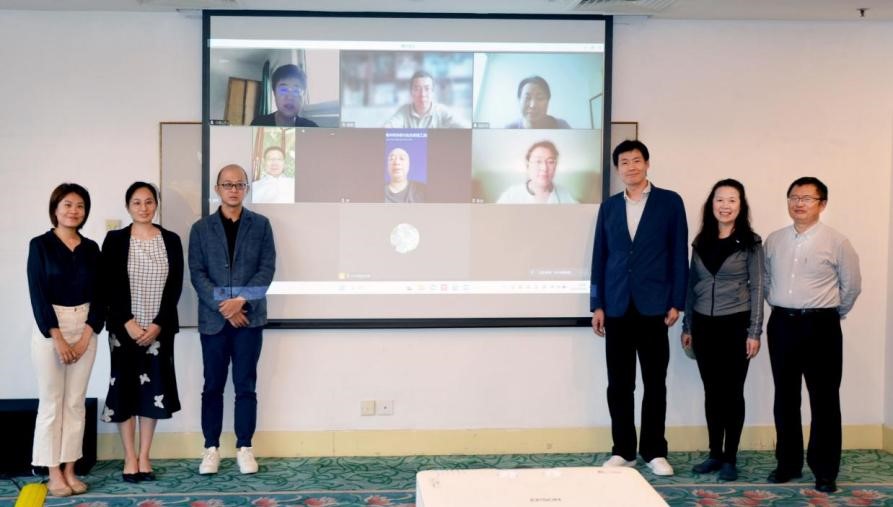China-Japan-Korea delegates discuss OECM progress towards '30x30'
On 6 March 2024, IUCN China organised a virtual workshop centred on Other Effective Area-based Conservation Measures (OECMs), inviting participants from China, Japan and the Republic of Korea. Representatives from the OECM China Expert Working Group, Japan's Ministry of the Environment (MoEJ), Korea National Park Service (KNPS) as well as the IUCN Global Protected Areas Team (PCA) shared updates on global, regional and national progress on OECM implementation, sparking lively exchanges and discussions.

Kicking off the session, Ms Aissa Traore from the IUCN PCA team delivered a comprehensive presentation on the global overview of OECMs. She emphasised their pivotal role in achieving Target 3 of the Kunming-Montreal Global Biodiversity Framework, which calls on the international community to conserve 30 per cent of land, waters and seas by 2030. She also highlighted potential to use the IUCN Green List Standard to identify and recognise effective protected and conserved areas. Ms Siska Sihombing, also from the IUCN PCA team, provided additional information about OECMs in other Asian countries.
Professor Li Diqiang, member of the OECM China Expert Working Group as well as the Chinese Academy of Forestry Sciences, introduced the research progress of OECMs in China. He particularly focused on sharing key messages from the newly drafted "A Stocktaking Report on OECM in China", which was co-authored by the Group in 2023 and covered topic such as relevant policy analyses, potential OECM areas and categorisations under different types of governance. He further highlighted three case studies, involving Beijing Jingxi State Forest Farm (government governance), CNPC Daqing Oilfield Biodiversity Reserve at Laohushan (private governance), and the Habitat of Phayre's Leaf Monkey in Mangxinhe River, Mangshi, Yunnan Province (shared governance).
Mr Mitsuo Wada, Section Chief of the Biodiversity Policy Division at the Nature Conservation Bureau of Japan's Ministry of the Environment, shared the latest developments around OECM identification in Japan. The Ministry unveiled its ‘30 by 30 roadmap’ in 2022, focusing on expanding Protected Areas and promoting OECMs. Consequently, the "30by30 Alliance for Biodiversity" was established, attracting participation from various sectors including private entities, local governments, and NGOs, with over 600 organisations and institutions joining as of November 2023.
Assisted by the 30by30 Alliance, Japan has launched a programme for "Nationally Certified Sustainably Managed Natural Sites", designating identified areas as OECMs upon successful validation. Presently, 184 OECMs have earned recognition, and Japan intends to report these outcomes in the World Database on OECM (WD-OECM). The criteria for OECM identification in Japan align with IUCN's standards which encompass four dimensions: geographic boundaries, sustained governance and management, biodiversity value, and effective and long-term in-situ conservation. At present, Japan identifies "Satoyama" in rural area and "Urban Green Space" as key potential OECM areas.
Mr Hag Young Heo, research fellow at the National Park Research Institute of the Korea National Park Service, provided an overview of OECM progress in Korea in recent years. He spotlighted 'K-OECM', or Korea's national OECM identification tool, detailing its design concept, screening and assessment criteria as well as identification process. Korea's OECM recognition criteria emphasise four dimensions: 1) Not Protected Areas, 2) Geographically defined areas, 3) Governance and management (effective and sustained), and 4) Biodiversity value (long-term conservation outcome). He also introduced some 30 types of potential OECM area categories identified by the Korean OECM Expert Group. These include conservation assets, buffer zones of Biosphere Reserves, religious sites, and university research forests.
Other participants, including Mr Teppei Dohke, Secretary-General of the Japan National Committee and Ms Shi Xiangying, Executive Director of SHAN SHUI Conservation Center, an IUCN Member in China, also attended the event representing the Members in their countries.
Moving forward, efforts will continue to promote regional and international exchanges, sharing progress on platforms such as the 8th IUCN Asia Regional Conservation Forum and the World Conservation Congress. This aims to offer case studies, experiences, and insights from the three countries to support global efforts in achieving the 30×30 targets.








